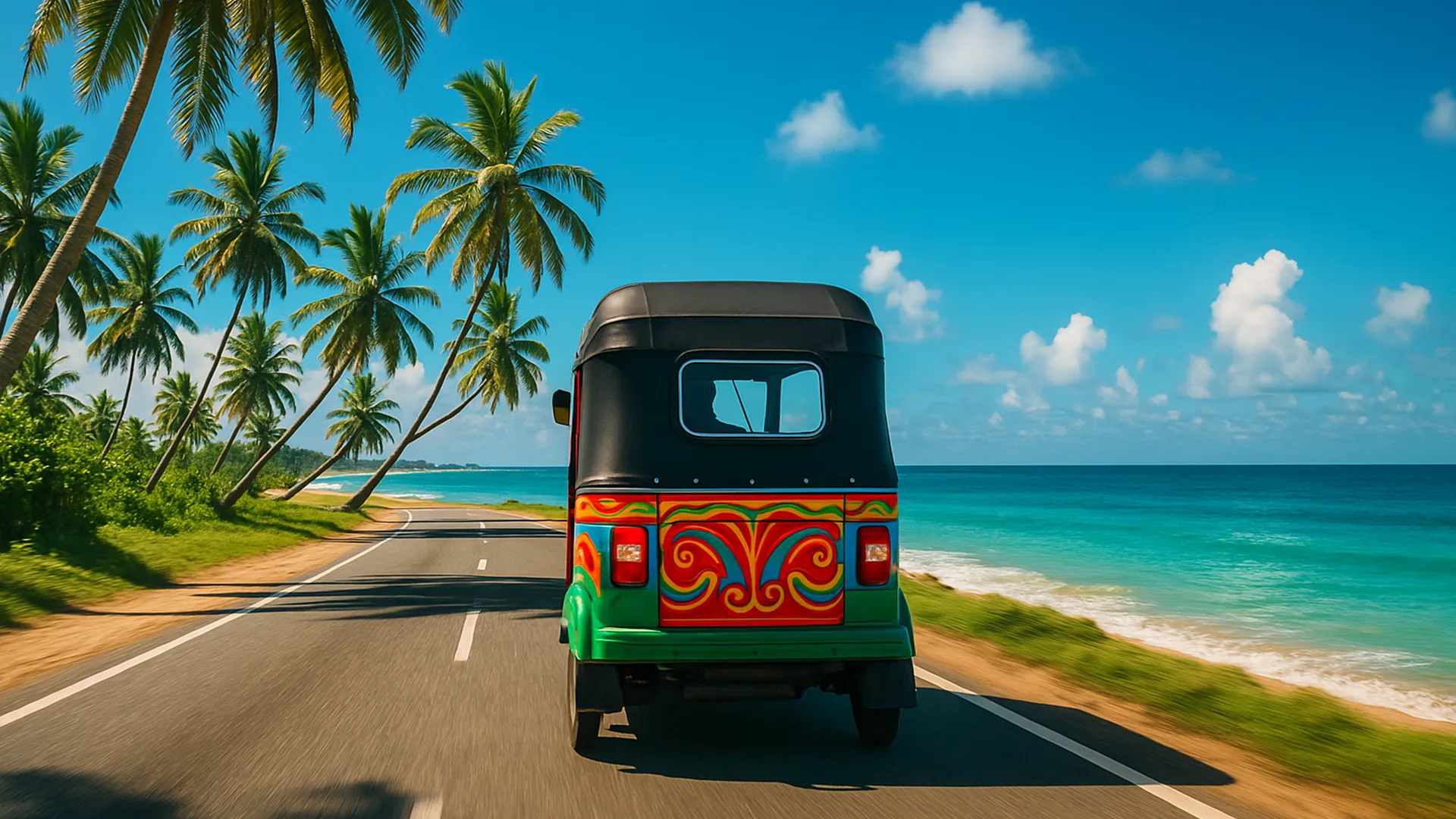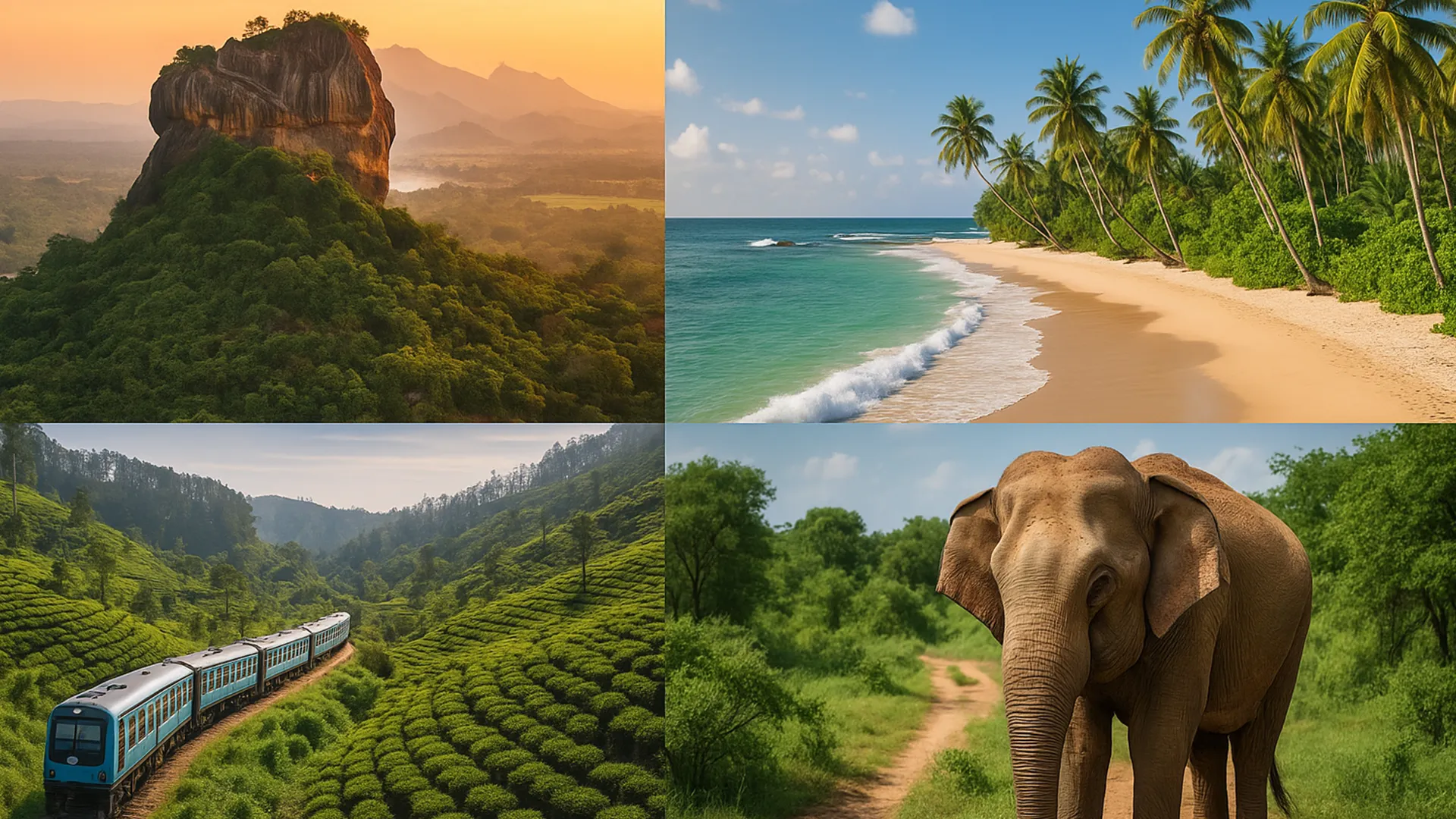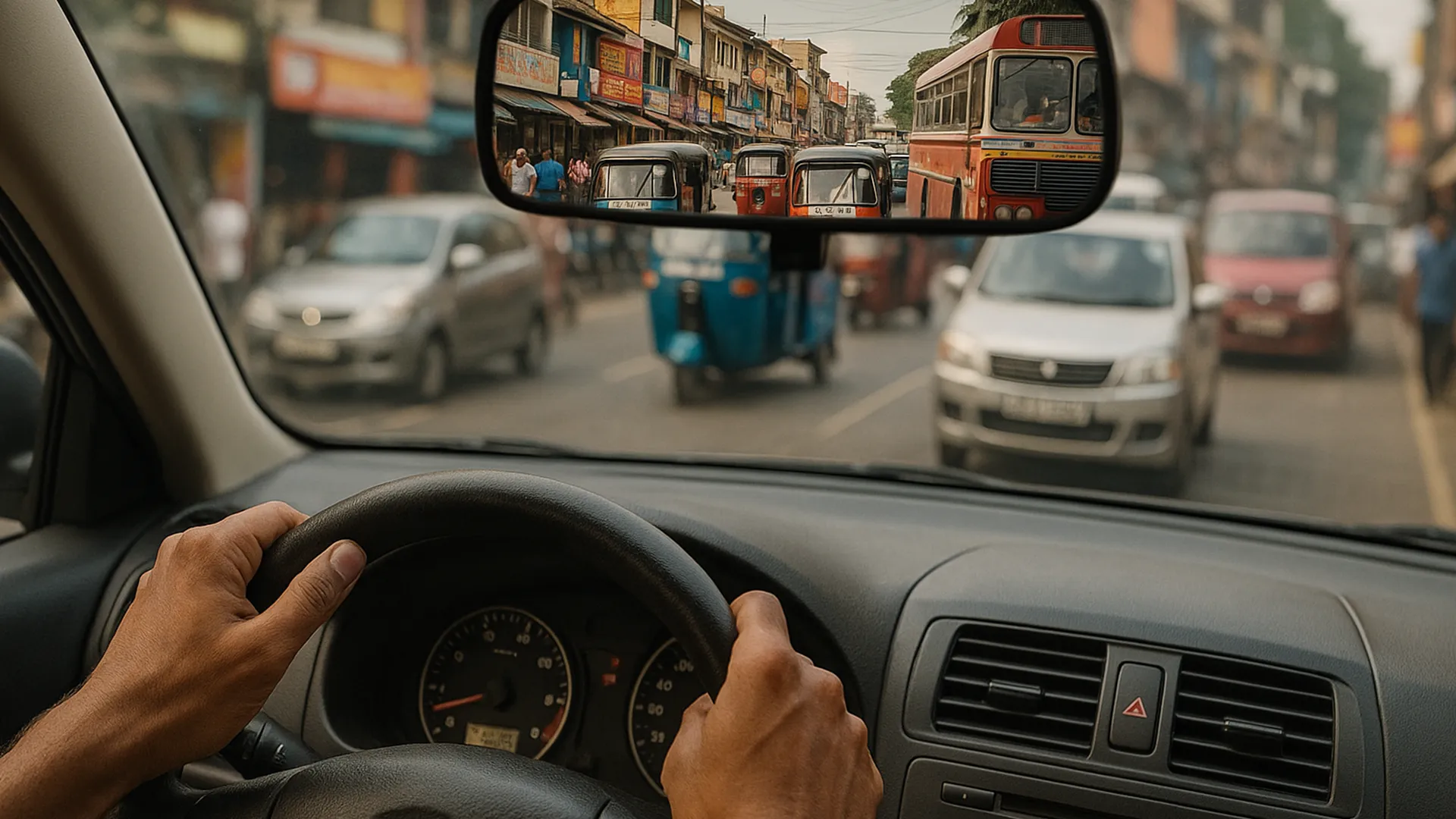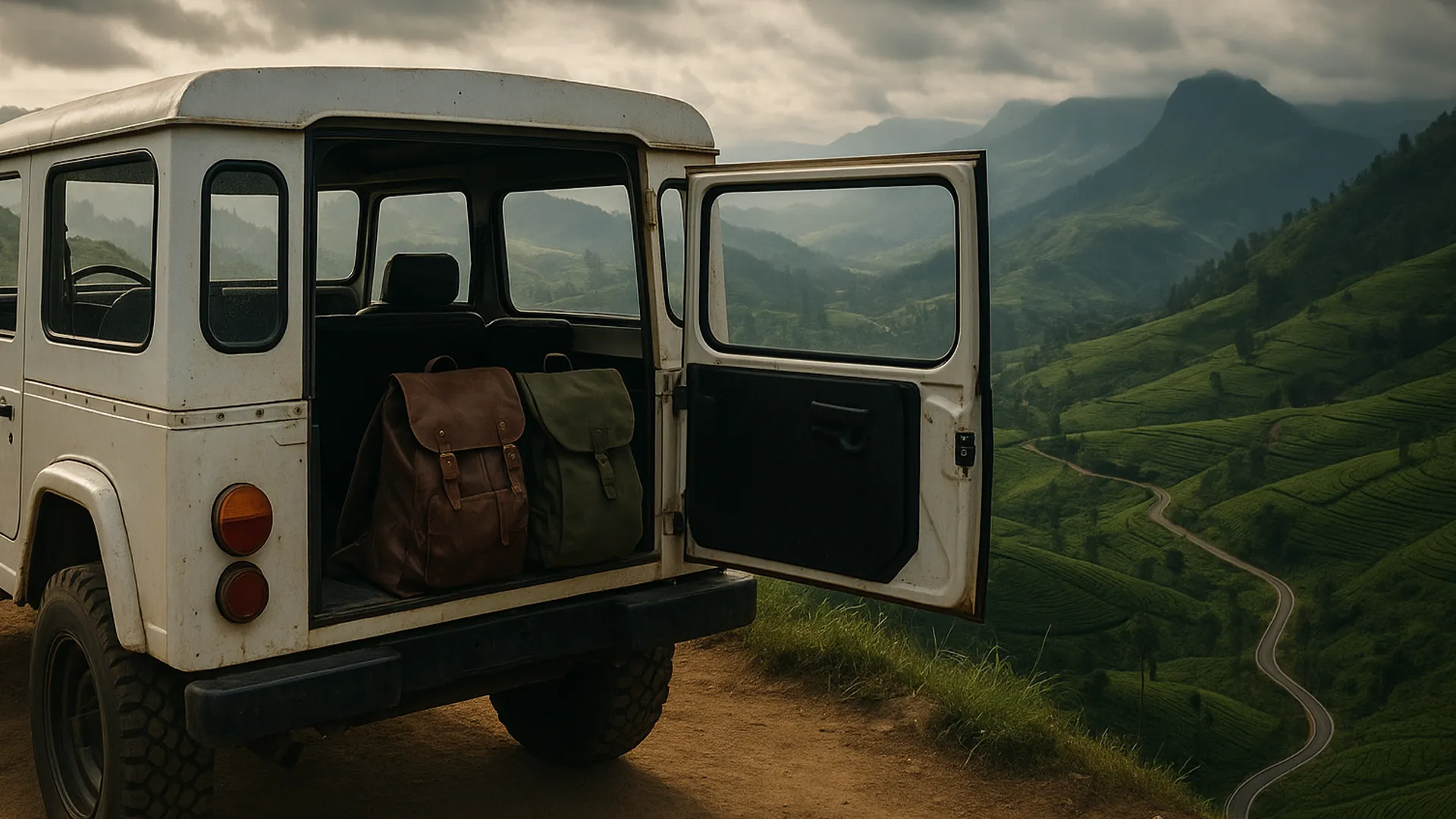
No vehicle is more synonymous with Sri Lanka than the humble, buzzing, gloriously colorful auto-rickshaw, universally known as the tuk-tuk. It’s the bloodstream of the nation, zipping through crowded cities, puttering down rural lanes, and lining up on every beachfront. For most tourists, it’s a cheap taxi. But for the truly adventurous, hiring your own tuk-tuk for a multi-day journey along the coastline is the ultimate way to embrace the slow, sensory, and wonderfully chaotic rhythm of Sri Lankan travel.
The adventure begins with the rental itself. You’ll find guesthouses and dedicated rental shops in tourist hubs like Negombo, Hikkaduwa, or Mirissa, offering tuk-tuks for daily or weekly hire. They’ll give you a brief overview of the controls - which is essentially an accelerator, a brake, and a handlebar to steer - and a pat on the back. It’s astoundingly simple to drive. The maximum speed is low (which is a safety feature in disguise), and its small size makes it incredibly agile. Packing is an art form. You must travel light. A couple of backpacks are all you can fit in the footwell or strap to the roof. This enforced minimalism is liberating.
Driving a tuk-tuk is a full-body experience. You are not sealed off from the world in an air-conditioned bubble. You are in it. You feel the warmth of the sun, the coolness of the evening breeze, and the occasional splash of a puddle. You smell the fragrant incense from temples, the pungent aroma of drying fish in fishing villages, and the sweet scent of frangipani flowers. You hear the full cacophony of life - the Bollywood music blasting from shops, the calls to prayer, the laughter of schoolchildren, and the constant, friendly toot of other tuk-tuks saying hello. It is immersive travel in its purest form.
The pace is gloriously slow. You are not going to break any land speed records. This slowness forces you to observe and absorb everything. You’ll wave to every smiling face you pass. You’ll get stuck behind a cart pulled by a majestic white bull and have to just slow down and enjoy the view. You’ll stop constantly - for a fresh coconut, to take a photo of a stunning bay, or to help push another traveler’s tuk-tuk out of a sandy ditch (a common bonding experience). The vehicle itself is a conversation starter. At every stop, curious locals will come to chat, asking where you’re from and where you’re going, often offering suggestions for places to see or eat.
A tuk-tuk road trip down the south coast, from Galle to Tangalla or beyond, is a perfect route. The distances between towns are short, the roads are (mostly) good, and there are countless beaches to discover along the way. You can follow the coast, dipping down tiny side roads that lead to hidden coves and fishing villages that big tour buses could never access. Your tuk-tuk is your ticket to freedom and your accommodation for the night. When you see a place you love, you simply find a guesthouse and stop. There’s no schedule to keep. It’s a journey that rewards curiosity and a willingness to embrace the unexpected. You’ll end each day dusty, sun-kissed, and buzzing from the vibration of the engine, but filled with an incredible sense of accomplishment and a collection of stories that you simply couldn’t get any other way. It’s not just a drive; it’s a rite of passage.
Powered by Froala Editor
Related Insights & Articles

September 18th 2025
The Island's Rhythm: A First-Timer's Guide to Navigating Sri Lanka's Diverse Climates and Cultures
Sri Lanka seems to exist in a thousand different worlds at once. One day you’re sweltering on a sun-drenched beach, the next you’re reaching for a jacket in the misty highlands. You can be exploring the ruins of an ancient civilization in the morning and watching blue whales in the afternoon. This incredible diversity is its greatest attraction, but it can also be a puzzle for first-time visitors. Understanding the island’s rhythmic cycles - of weather, culture, and geography - is the key to crafting a seamless and deeply rewarding journey.
The most decisive factor in planning your trip is the monsoon. Unlike a single rainy season, Sri Lanka has two, blessing it with a year-round tropical climate but dictating which coast is sunny when. From roughly May to September, the southwest monsoon brings rain to the west and south coasts (e.g., Colombo, Galle, Hikkaduwa, Mirissa) while the east coast (Trincomalee, Arugam Bay) enjoys its dry, sunny season. This pattern flips from October to April, when the northeast monsoon dampens the east, and the west and south coast bask in glorious sunshine. The hill country and cultural triangle can be visited year-round, though afternoon showers are common. The secret is not to fear the monsoon. The rains often come in short, intense bursts, followed by brilliant sunshine. The landscape is at its most lush and vibrant, the crowds are thinner, and the air is clean and fresh.
This climatic split makes Sri Lanka a fantastic destination for a two-centre holiday. A perfect two-week itinerary for a first-time visitor, planned around the weather, could begin with the cultural highlights. Fly into Colombo and immediately head to the Cultural Triangle. Spend three or four days exploring the awe-inspiring ancient cities of Anuradhapura and Polonnaruwa, the rock fortress of Sigiriya, and the cave temples of Dambulla. This is where you’ll delve deep into Sri Lanka’s 2,500-year-old Buddhist history. From there, take one of the world’s most scenic train rides into the Hill Country. The journey from Kandy to Ella is an attraction in itself, chugging through tea plantations, past waterfalls, and through misty mountains. Spend a few days in Ella hiking Little Adam’s Peak and Ella Rock, touring a tea factory, and enjoying the cooler climate.
Then, descend from the hills to the coast. Depending on the season, you’ll choose your beach destination. If it’s the dry season on the south coast, head to Mirissa or Unawatuna for whale watching, surfing lessons, and pure relaxation on golden sands. If it’s the East Coast’s time to shine, make the journey to Arugam Bay for a more laid-back, rustic vibe and world-class surfing. This balance gives you the perfect mix of activity and relaxation, culture and nature, all within a compact island.
Weaving through all of this is the warmth of the Sri Lankan people. The culture is a beautiful tapestry of different ethnicities and religions - Sinhalese, Tamil, Muslim, and Burgher - living together. You’ll see Buddhist temples, Hindu kovils, Islamic mosques, and Christian churches, often in proximity. This diversity is reflected in the incredible food, from fiery Sinhalese curries to hearty Tamil meals and delicious Muslim short eats. As a visitor, you are greeted with a genuine, open-hearted hospitality that is rare in the world. A smile is always returned. Don’t be surprised if you’re invited to a local home for tea or offered help without even asking for it.
The rhythm of Sri Lanka is one of beautiful contrasts. It’s the frantic energy of a Colombo market and the profound peace of an ancient temple. It’s the cool silence of the highlands and the powerful roar of the ocean. It’s the spice-infused aroma of a curry and the simple sweetness of a tropical fruit. To navigate it is to embrace this variety. Pack for every occasion, plan around the sun and rain, move between the sacred and the scenic, and most importantly, leave room in your itinerary for the unexpected moments of connection that will truly define your journey. Sri Lanka doesn’t just show you its sights; it invites you into its rhythm, and once you find it, it’s a rhythm you’ll carry with you long after you’ve left its shores.
Powered by Froala Editor

September 18th 2025
Behind the Wheel: Navigating the Rules, Rituals, and Realities of Driving in Sri Lanka
The decision to self-drive in a foreign country is a bold one, filled with visions of freedom but also tinged with apprehension. In Sri Lanka, both the dream and the challenge are very real. Driving here is a vibrant, chaotic, and uniquely organized ballet that operates on its own set of rules. Understanding these unwritten codes and practical realities is the key to transforming a potentially stressful experience into a confident and enjoyable adventure.
The formalities come first. To drive legally in Sri Lanka, you must have an International Driving Permit (IDP) alongside your valid driver's license from your home country. Car rental companies will require both. It is absolutely non-negotiable, and your insurance is void without it. When you pick up your vehicle, inspect it thoroughly. Note every single scratch, dent, and imperfection on the rental agreement before you drive away. Check the tire tread, the spare tire, and that all lights and indicators work. Take photos and videos of the car’s condition from every angle. This protects you from any unfair claims upon return.
Now, for the driving itself. The number one rule: drive on the left. It sounds simple, but after a lifetime of driving on the right, it requires constant, conscious effort. A good trick is to put a small sticker on the top-left corner of your windshield as a reminder. The second most important piece of advice is to be exceptionally cautious when pulling out into traffic or at junctions. Right of way is often determined by size and assertiveness, not by road signs. The largest vehicle usually has the right of way. Expect the unexpected at all times. The road is a shared space for cars, buses, trucks, tuk-tuks, motorcycles, bicycles, pedestrians, dogs, cows, and occasionally monkeys. Watch for hand signals from tuk-tuk and motorcycle drivers - a waving left hand often means it’s okay to overtake them.
The rhythm of the road is set by the public buses. They are the kings of the asphalt, often driving assertively and overtaking on blind corners. The universal language for “I’m coming through” is a quick flash of the headlights. If you see this coming from behind, especially from a bus or truck, it’s best to gently slow down and move left to let them pass. Similarly, if you are overtaking, a quick toot of the horn is a common way to alert the driver in front. This is not considered rude; it’s a necessary safety communication.
Outside of the main cities, driving becomes a more pleasant experience. The roads winding through the hill country towards Ella or Nuwara Eliya are spectacularly beautiful, but also narrow and winding. Take your time, use your horn on blind corners, and pull over to let faster local vehicles pass. Within Colombo, driving is an advanced-level skill. The traffic is dense and unpredictable. Many visitors choose to pick up their rental car after they leave the city, using taxis or Uber (which operates here) to navigate the capital.
Finally, embrace the journey. Allow extra time for every trip. What looks like a 100-kilometer journey on a map might take three or four hours due to the winding roads, traffic, and inevitable stops for photos, tea, or to let a herd of cows pass. Have a reliable offline map downloaded (Google Maps or Maps.me), carry cash for toll roads and parking, and always keep a bottle of water and your sense of humor handy. Driving in Sri Lanka is not a task to be endured; it’s an activity to be experienced. It will make you a more alert, patient, and adaptable driver. And the stories you’ll tell about navigating a mountain road with a bus on one side and a 1000-foot drop on the other will be among the best souvenirs you bring home.
Powered by Froala Editor

September 18th 2025
The Freedom of the Open Road: A Beginner's Guide to a Sri Lankan Road Trip
The concept is endlessly romantic: hiring your own vehicle, mapping out a route, and setting off on an adventure where the journey itself is the destination. In Sri Lanka, this dream is entirely attainable, offering a level of freedom and spontaneity that organized tours can never match. The island’s compact size means you can experience beach, mountain, jungle, and ancient city within a relatively short drive, each turn in the road revealing a new vista. However, a Sri Lankan road trip is also a unique beast, an exhilarating dance that requires a blend of preparation, patience, and a good sense of humor.
The first and most important decision is your choice of steed. For the rugged, off-the-beaten-path explorer, a 4x4 Jeep is the king of the road. It offers peace of mind on rough mountain tracks, during monsoon showers, and on the dusty trails near national parks. For the vast majority of travelers sticking to main roads, a small, nimble car is perfect. It’s economical on fuel, easy to park in tight spaces, and maneuverable in hectic traffic. The most iconic, and arguably most fun, option for the coastal areas is the tuk-tuk. Renting an auto-rickshaw for a few days to putter along the southern coastline is a truly authentic Sri Lankan experience. It’s slow, open-air, and allows you to feel every sight, sound, and smell of the country. Just be sure to pack light!
Navigating Sri Lankan roads is an adventure in itself. Google Maps is generally reliable for main routes, but it’s wise to have a general sense of direction. The most important rule to remember is that in Sri Lanka, you drive on the left. This seems simple but requires constant vigilance, especially when pulling out from a stop or navigating roundabouts. Sri Lankan driving might initially seem chaotic to an outsider - a lively symphony of honking, overtaking, and sharing the road with everything from buses and trucks to cows, dogs, and pedestrians. The honk is not aggressive; it’s communicative. It’s a way of saying “I’m here,” or “I’m overtaking.” Embrace it. The key is to drive defensively, be predictable, and never assume the right of way. Patience is your most valuable asset.
The magic of a road trip, however, lies in the unplanned stops. This is where your own wheels grant you the greatest gift: serendipity. You can pull over whenever you see something interesting. Perhaps it’s a bustling local market where you can sample exotic fruits. Maybe it’s a small, unnamed temple where a friendly priest shows you around. It could be a viewpoint that isn’t in any guidebook, where you can stop for a cup of wonderfully sweet local tea and just take in the landscape. You might find yourself invited to a local village wedding or stumble upon a beautiful, secluded waterfall. These are the moments that become the heart of your travel story, the moments you simply cannot schedule.
A well-planned road trip itinerary is a beautiful thing. You could start in the cultural triangle, exploring the ancient ruins of Anuradhapura and the rock fortress of Sigiriya. From there, wind your way up into the hill country on a spectacular train-like road, passing through tea plantations and stopping in Ella for a hike. Then, descend back to the coast, trading the cool mist for the warm sun, and spend your final days relaxing on the beaches of the south or east coast. Each leg of the journey offers a dramatically different world, all within a few hours' drive. With your own vehicle, you are the master of your time. You can leave at dawn, or you can sleep in. You can spend three hours at a site that captivates you, or move on quickly from one that doesn’t. The freedom is absolute. It’s a chance to write your own adventure, one kilometer at a time, in one of the most beautifully diverse islands on Earth.
Powered by Froala Editor
